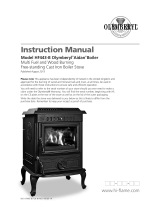
Two-pipe Thermostatic Radiator Valves with
automatic balancing
Installation and operating instructions
Approved to EN215:
Quality Standards:
All Drayton Thermostatic Radiator Valves are approved to the
European Standard EN215.
All Drayton Thermostatic Radiator Valves are manufactured in
factories assessed and certied to BS EN ISO 9001.
General description
Drayton’s auto-balancing TRVs maintain a constant ow rate in the radiator
regardless of changes in system pressure or other TRVs in the system opening
and closing. As such they help to avoid cold spots in the home and contribute
to improved boiler efciency.
Description of operation
The auto-balancing valves contain a cartridge which maintains ow rate
through the radiator at all times. Note that the valve must simply be set ac-
cording to the output of the radiator to ensure that each radiator receives the
correct ow of water at all times.
Installation
IMPORTANT: observe the ow direction indicated on the side of the valve.
When lling and commissioning the system ensure that valve insert is in
commissioning position (the valve is delivered in the commissioning position).
Use the balancing key 07 35 162 or a 11mm spanner to adjust the hex at the
top of the valve insert and align setting value with index mark according to
the table in this document. This will ensure that the radiators always receive
the correct ow regardless of system pressure and other valves opening and
closing.
The lockshield should be fully open and only used only to isolate the radiator.
Mounting
When using jointing compound, care must be taken to avoid any excess being
transferred to the valve seat, as this could cause malfunction of the valve.
DO NOT FIT CAPILLARY FITTINGS near to these valves as excessive heat from a
blowtorch may damage the internal valve components. The maximum tempera-
ture of the thermostatic head is 50oC.
Schneider Electrical Controls Ltd
401 Southway Drive
Plymouth
PL6 6QT
United Kingdom
Technical Helpline Tel: 0333 6000 622
Website: www.draytoncontrols.co.uk
06490344001 Iss A
If the output of the radiator is not known please use the setting
position calculator on the Drayton website, here:
You’ll also nd further help and advice on radiator balancing.
https://www.draytoncontrols.co.uk/calculator



